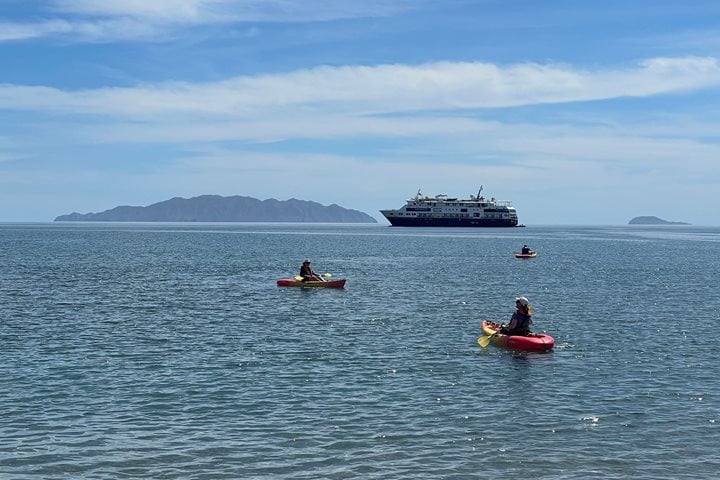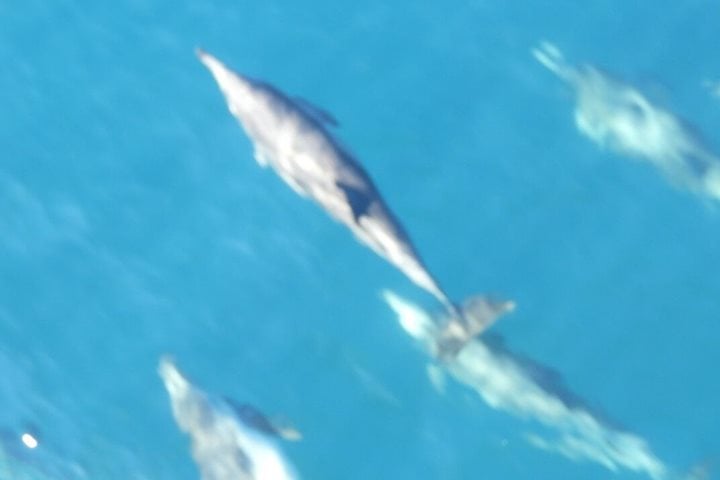For this morning, we arranged an early sunrise party to San Esteban Island, which lies in the Midriff area of the Gulf of California. Facing southeast, the wide Arroyo Limantour is the best location to contemplate the sun rising over the mainland of Mexico. After breakfast, our guest and naturalists walked on the arroyo in search of the “pinto” or piebald chuckwalla, an endemic, “gigantic” version of the normal, mainland form of this lizard, and the spiny-tailed iguana, which constitute another endemic species. These iguanas climb up to the tops of cardon cacti to get the nutritious flowers and fruits. San Esteban has long been a very isolated island, and many of its reptiles and cacti are unique. Therefore it is regarded a “laboratory of evolution” by biologists. The waters around, though cold and with complicated currents, shelter a great diversity of marine wildlife too, so our expedition diver Maya ventured in the sea and captured this biodiversity with a submersible video camera. At noon, the National Geographic Sea Bird sailed north for the afternoon activities, and we encountered bottle-nosed and long-beaked common dolphins in the way. We anchored at Rasa, a little island that is the colonial breeding site for elegant and royal terns and Heermann’s gulls, and made cruises around it on the expedition landing craft. During these, guests and staff were enchanted with the number of nesting seabirds and their vocalizations (that filled the air and our ears with metal-like and laughing-like sounds). Dr. Enriqueta Velarde (a leading researcher and ornithologist of Rasa) joined us for dinner and made a presentation of her work on the island. We learnt a lot today and had a lot of fun!
Call +1.800.397.3348 or contact your travel advisor







